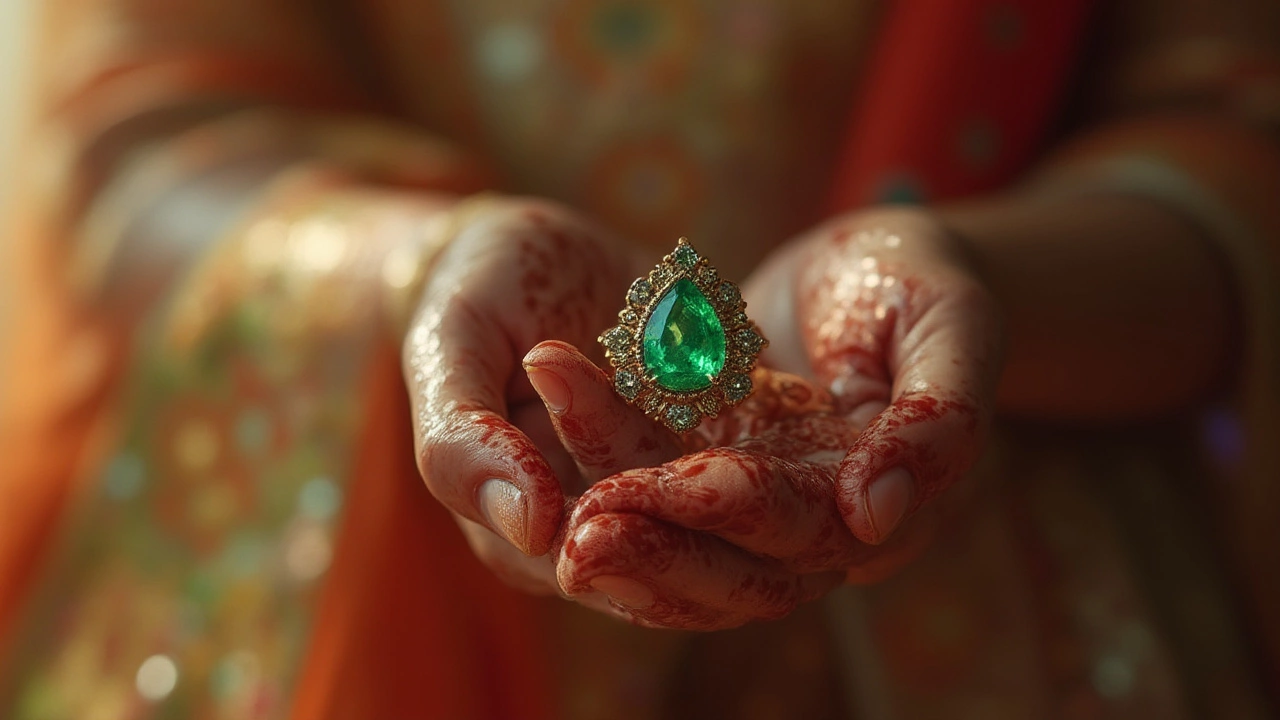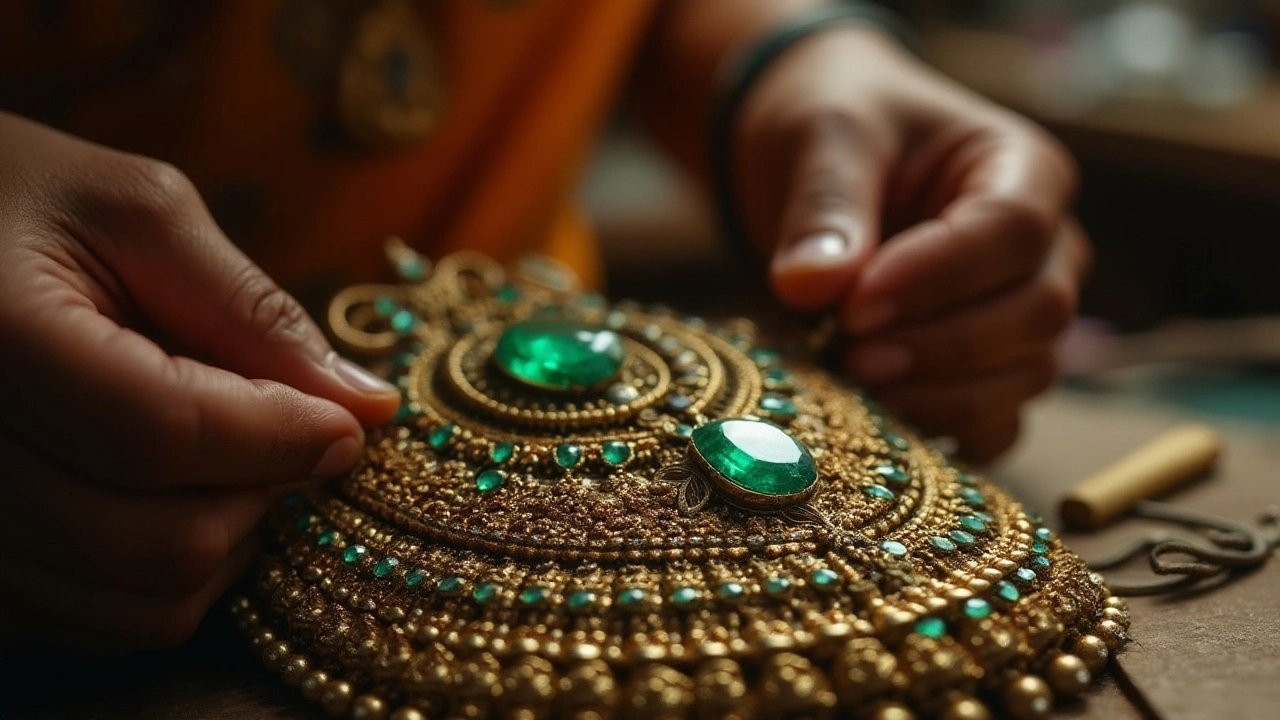
Emeralds are loved for their vibrant green, but are they tough enough for daily wear? Learn why emeralds need extra care, risks of wearing them daily, and tips to protect your jewelry.
When talking about emeralds, a rich green variety of the beryl family prized for centuries. Also known as green beryl, they are a staple in high‑end jewellery, a craft that blends art and tradition. As a type of gemstone, emeralds bring colour, value, and cultural meaning to every piece they touch. In India, they often sit beside gold and diamond settings, creating a luxe look that appeals to both classic and modern buyers.
Emeralds have been a status symbol since the Mughal era, when rulers used them to showcase wealth and power. Today, designers still rely on the stone’s deep hue to create statement necklaces, earrings, and rings that stand out against traditional gold work. The stone’s rarity means each piece often carries a story, making it perfect for wedding accessories like mangalsutras or bridal bangles. At the same time, the rise of affordable imitation jewellery has pushed real emeralds into niche markets, where genuine stones command premium prices.
Choosing an emerald isn’t just about colour; it’s about quality too. The key attributes include clarity (inclusions are called "jardins"), cut, carat weight, and origin. Colombian emeralds are famous for their vivid tone, while Zambian stones often offer better value. Understanding these attributes helps shoppers avoid cheap imitations that lack the stone’s signature depth.
Care is another big part of owning emeralds. Because the stone is softer than diamonds, daily wear demands protective settings—usually bezel or halo designs that shield the surface. Cleaning with warm, soapy water and a soft brush works best; harsh chemicals can damage the natural fractures. Many Indian jewelers recommend periodic professional inspections, especially for heirloom pieces that travel across generations.
From an investment perspective, emeralds hold their value when they meet high‑grade criteria. A certified, well‑cut emerald with few inclusions can appreciate over time, especially if sourced from reputable mines. Buyers often look for GIA or IGI reports to verify authenticity, a practice that’s becoming standard in online marketplaces and traditional stores alike.
Emeralds also influence fashion trends beyond jewellery. Designers incorporate emerald‑tone fabrics into bridal wear, and stylists pair emerald earrings with silk sarees for a luxe, coordinated look. The stone’s versatility makes it a favorite for both day‑to‑night outfits, proving that a single gemstone can bridge cultural heritage and contemporary style.
Below you’ll find a curated collection of articles that dive deeper into these topics—from buying guides and care tips to the latest trend reports. Whether you’re a first‑time buyer, a seasoned collector, or just curious about how emeralds fit into today’s Indian jewellery scene, the posts ahead will give you practical, no‑fluff insights to help you make informed choices.

Emeralds are loved for their vibrant green, but are they tough enough for daily wear? Learn why emeralds need extra care, risks of wearing them daily, and tips to protect your jewelry.

Indians have cherished emeralds for centuries, seeing them as symbols of prosperity, healing, and divine connection. In temple jewellery, emeralds hold significant cultural and religious value, often being associated with sacred icons and rituals. The lush green stones offer not only aesthetic appeal but also convey a sense of majesty and tradition. This article explores the historical roots, cultural significance, and spiritual attributes that make emeralds a vital component of Indian jewellery, particularly in temples.